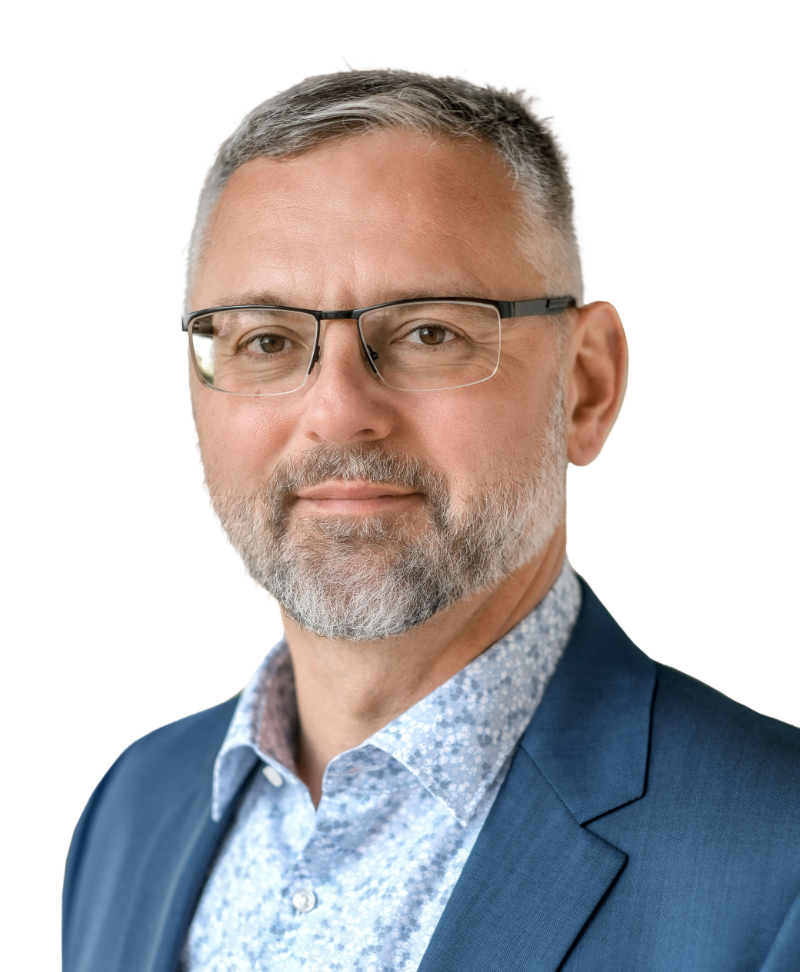The presence of trees in urban environments is of great importance, helping to combat heat islands and promote the well-being of residents. But ensuring the health of urban trees is a long and costly process. Stéphane Krebs and HEPIA have taken up a major challenge: to create a system that can monitor a tree's state of health permanently and remotely.
Trees are of fundamental importance for our environment, for the climate, but also for human well-being. They contribute to biodiversity, air quality, preventing urban heat islands and reducing pollution. The health of plants and trees is an integral part of theAgenda 2030 for sustainable development, and biodiversity management policies are evolving, with Lausanne planning to have 30% canopy cover by 2040. However, the situation of trees in the city is complex, and they can even be a source of danger to humans or buildings when they fall. To ensure that large trees in urban areas cohabit well, it is essential to know their state of health, so that they can be cared for effectively.
An idea was born
Stéphane Krebs runs the family business, Krebs paysagistes SA, founded in 1937, and looks after, among other things, large trees, for which he spends hours on the road to check on their health. In 2016, he had an idea: the trees should be able to tell him how they were doing, without him having to go anywhere. In this way, he could act preventively and visit trees in urgent need of care. The idea caught on, and two years later, Stéphane Krebs decided to put it into practice and design a tree monitoring system.
He contacted Professors Éric Amos and Peter Gallinelli at the Geneva School of Landscape, Engineering and Architecture (HEPIA), as well as Raphaël Conz at the Vaud Department for the Promotion of the Economy and Innovation (SPEI). The latter directed them to Robert van Kommer, Alliance's innovation consultant, who would support the team in setting up an Innosuisse project. Drafting the Innosuisse project turned out to be a complex and time-consuming task, but the application was finally submitted and accepted.

Robert van Kommer is an enthusiastic person with a wealth of experience. He immediately understood the project's needs, expectations and potential.
Perceiving the imperceptible
Once funding had been secured, the first step was to determine which values to measure in order to know, on an ongoing basis, the health, vitality and stability of a tree. While measuring stability by trunk movement proved relatively straightforward, the question of vitality was much more thorny. After considering several possibilities, the quality of photosynthesis, or Normalized Difference Vegetation Index (NDVI), was finally chosen as the determining value. This index, defined by the ability of leaves to reflect light, is a good indicator of a plant's vitality, since leaves are affected in all cases, particularly when attacked by parasites, disease or water stress, for example. However, the measurement of this index by remote sensing is carried out on top of plants, using sensors mounted on satellites or drones, such as those used in agriculture. The research challenge was to verify the feasibility, acquire the knowledge and then demonstrate that it was also possible to measure NDVI on the underside of leaves, from the foot of the tree, with the required precision.
The results were more than convincing, as the team demonstrated that it works equally well for all types of foliage, even the most variegated and crimson. This discovery has enabled them to design an innovative device that provides the measurements needed to monitor the stability and vitality of trees 24 hours a day, and is easy to install in urban environments. Placed a few meters up the trunk, the device is non-intrusive and adapts to the tree's growth. It takes measurements every ten minutes and transmits an average of this data via the LoRa network - a low-power, biodiversity-friendly network. These averages are stored on servers in Switzerland and returned to the monitoring program in the form of graphs and pictograms. The system makes it easy to see a wide range of elements, such as night-time light pollution or water stress in relation to drought episodes.
A long-term project
Innosuisse projects on the scale of Connected Trees often face many challenges. Initially scheduled to take two years, external factors - the COVID pandemic and the shortage of electronic components - will delay certain stages of the project. "Stéphane Krebs explains: "You have to hang in there and see it through to the end. Robert van Kommer was also able to provide the team with an outsider's point of view when things came to a standstill. "He was always there when we needed him," explains Stéphane Krebs. Technological development was finally completed, and the innovation was patented. It will take another year of measurements on around a hundred trees to validate the data transmitted by the device, in comparison with meteorological events for example.
The results are conclusive, and the system is now ready for commercialization. To launch production on a larger scale, Stéphane Krebs now needs to find customers. As part of his eco-responsible and sustainable approach, he is not looking for financial investors, but for pre-financing from buyers. The devices are made in part from recycled components, in French-speaking Switzerland, where the data is also stored and analyzed. And if the Connected Trees project brings a new approach to tree health in the city, it can also be deployed in other areas, such as forests, fruit crops or vineyards.
This project opens the way to a new understanding of our friends the trees, to a better dialogue and a more respectful cohabitation between humans and plants.
Krebs paysagistes at a glance
Founded: 1937
Head office: Blonay
Team: 20 - 25 employees
Skills: Creation and maintenance of gardens and landscaping, planning and design, landscape architecture, care of large trees, enhancement and promotion of biodiversity.
Website: arbres-connectés.ch, krebs-paysagistes.ch

